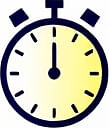Flow State Triggers for Enhanced Productivity
 by Verner Mayer
by Verner Mayer
Discover practical ways to activate flow state and boost your focus. Learn how to use triggers like optimal environments and task alignment to achieve deeper concentration and improve daily efficiency for professionals and students alike.
Flow state represents a period of intense focus where tasks feel effortless and engaging. This concept helps individuals achieve more in less time. To begin, consider what sparks this state in everyday routines.
The Basics of Flow State
Flow state occurs when someone is fully absorbed in an activity. It often leads to higher productivity levels. For busy professionals, reaching this state can mean completing projects with ease.
One key trigger involves selecting tasks that match personal skills. When challenges align with abilities, engagement rises naturally. This balance prevents frustration and promotes smooth progress.
Environmental Factors as Triggers
Creating the right surroundings plays a vital role. A quiet space free from distractions allows for better concentration. Natural light and comfortable seating can enhance this effect.
For students, incorporating elements like music without lyrics serves as another flow state aid. These adjustments help maintain attention during study sessions.
Mindset and Preparation
Mental readiness is essential. Starting with a clear plan sets the stage for success. Defining goals before beginning work ensures steady movement forward.
Breaks are important too. Short pauses after focused intervals refresh the mind and sustain energy. This approach supports long-term productivity without burnout.
Practical Techniques to Activate Flow State
Several methods stand out for triggering flow. Time blocking, for instance, dedicates specific periods to single tasks. This technique minimizes interruptions and builds momentum.
Hyperfocus techniques involve eliminating external noise. Turning off notifications on devices keeps the mind on track. Productivity gains from these habits are noticeable over time.
Lists can organize thoughts effectively. A simple checklist outlines steps and tracks achievements. This tool reinforces a sense of accomplishment and encourages continuation.
Overcoming Common Barriers
Distractions often hinder flow. Recognizing patterns, such as checking emails frequently, is the first step. Adjusting routines to limit these habits restores focus.
Physical activity before work sessions acts as a trigger. A quick walk clears the mind and prepares it for deep work. Regular exercise contributes to overall well-being and efficiency.
Real-Life Applications
In professional settings, flow state triggers help with complex assignments. For example, scheduling creative work in the morning leverages peak mental clarity.
Students benefit from timed study blocks. Allocating 25-minute segments followed by rest periods maintains hyperfocus during exams or projects.
Building Lasting Habits
Consistency is key to making these triggers routine. Tracking progress in a journal highlights what works best. Over time, this builds a personalized system for sustained performance.
Remember, small changes lead to big results. Experimenting with different triggers finds the ideal combination for individual needs.
In summary, activating flow state involves thoughtful preparation and environment control. By applying these strategies, anyone can enhance their daily output and achieve greater satisfaction in their efforts.
